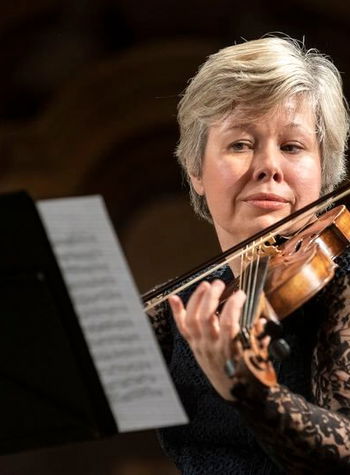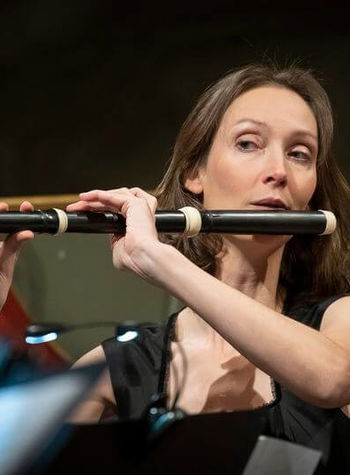We shall begin with Tůma, whose Partita in D minor opens today’s concert. The only work on the programme in the form of an orchestral suite, it is a very unusual example of the genre. The slow – fast sequence of the first two movements can be understood as the composer’s reference to the French overture, which traditionally opens the Baroque orchestral suite. Tůma, of course, was composing during the transition between the Baroque and Classical periods, and in addition we find ourselves in Vienna, so what we have here is an example of what was called a Viennese divertimento, a secular instrumental music with a succession of movements of sharply contrasting character. The seriousness of the opening movements contrasts with the arietta, in which the viola takes the lead, and a menuet and trio are placed at the very centre of the composition.
Traditionally, Tůma is said to have been a singer at Prague’s Minorite Church of St James, and he is usually listed among the pupils of Father Bohuslav Matěj Černohorský. They may have met shortly after 1720, when Černohorský returned from Italy. Soon after that, however, Tůma left for Vienna, where the oldest documented trace of him is found: records of his marriage in 1727. He was employed in the service of Count Franz Ferdinand Kinsky, who enabled him to perfect his language skills and arranged for him to study under the imperial court Kapellmeister Johann Joseph Fux, a famed composer and teacher. When Tůma applied unsuccessfully in 1734 for the position of Kapellmeister at the cathedral in Prague, Count Kinsky recommended him, calling Tůma “the only person so far capable of imitating the famed imperial Kapellmeister Fux and of working in accordance with his rules.” After the count’s death in 1741, Tůma served for another two decades as the Kapellmeister to the empress dowager Elisabeth Christine. Tůma wrote many compositions for his brilliant ensemble of professional musicians. After the death of the empress dowager, the ensemble was dissolved, and Tůma was granted a pension allowing him to devote himself to music freely, first in Vienna, then from 1768 at the Premonstratensian monastery in Geras. He died in Vienna in 1774.
The influence of Černohorský and Fux, the abundance of opportunities to compose for wonderful musicians, and the inspiration of Vienna’s musical life offered uniquely fertile ground for Tůma to cultivate his own personal style, which exhibits a certain conservatism combined with stylistic elements that were quite contemporary. We find both in his Sinfonia a quattro in B flat major, which represents another basic instrumental genre of the period. The music is conservative in terms of its four-movement structure and the absence of dance movements or the relative equality of the two violin parts in the opening pair of movements, recalling the trio sonata genre. However, the concentrated, expressive musical language is entirely in keeping with the times. The same applies to the two-movement Sonata in A major, which represents a kind of instrumental sacred composition often used in place of the Gradual, i.e., before the Gospel. These were usually three-voice compositions corresponding to the first two movements of a trio sonata, but performed by large orchestral forces. In this case, however, the pair of violins is joined by two more violino ripieno parts, which add another independent musical layer to the composition. It is possible that these were originally movements of a now lost concerto grosso by Tůma, adapted later for the given purpose.




